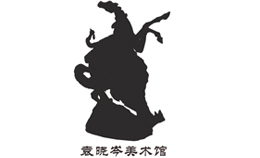Kunming Listings
Change cityYuan Xiaocen Art Museum
Art gallery dedicated to Chinese painter and sculptor Yuan Xiao Cen, plus a riverside sculpture garden.
Bus A1, 44, 73, 233, 24, 184 to Dianchi College, walk along Hongta Xi Lu for 15min.
- NameYuan Xiaocen Art Museum
袁晓岑艺术园 - Address26 Hongta Xi Lu, Kunming
昆明红塔西路26号 - Phone(0871) 64315589
- HoursTue-Sun
9:30am-12pm
1:30-5pm - WEBSITEwww.yxcart.net/

Login to review
Reviews
Yuan Xiaocen Art Museum
This is a remarkable collection. GoKunming's comment that Kunming began to become a real city during the War of Resistance against Japan (World War II) is right on target. For eight years (1938-1946), Kunming was host to Southwest Associated University – a wartime amalgamation of Beida, Qinghua, and Nankai – making it the most prominent center of higher education in China as well as a focal point for academic freedom, intellectual vitality, cultural diversity, and political protest. As the photos show, Kunming also played host to the Flying Tigers (later morphed into the 14th Air Force) and American ground forces, the first large contingent of Westerners to set foot in the city. In the early 1940s Kunming took the first big steps in its emergence from provincial isolation. Gregg Millett's photos showing the premodern face of Kunming, then, conceal as much as they reveal.
For residents of the present city in the second decade of the 21st century, there is more than a slight disconnect between the 1940s and the present. One cannot help but ask what happened, when, and why. This is not the place to address those issues. However, having first lived in Kunming in 1980, roughly midway between the 1940s and the present, I would be remiss if I failed to make a few comments. The Kunming I recall at the beginning of Deng's Reform and Opening Up was in many ways closer to the city of the 1940s than it is to the city we live in today. Urban Kunming was largely confined within the area circumscribed by the old city walls. A walk or bike ride from Huancheng Beilu (now Yi-er Yi Dajie) to Jinbi Lu, just south of the old Jin Ri Lou, was a trip through the past. Though the city walls, gates, towers and arches had already been destroyed, the two-storied wooden shops and residences that appear in Dr. Millett's photos were omnipresent. Homes of prominent professors at Southwest Associated University, including the martyred Wen Yiduo and the university's de facto president, Mei Yiqi, were easy to find. Streets were narrow and some, such as Huashan Beilu, were still cobblestoned. Among the major downtown streets, only Zhengyi Lu had gotten a facelift. Charming little alleys had yet to be turned into thoroughfares for voracious automobiles. The piecemeal destruction of the old city continued throughout the 80s but it was not until the 1990s that local authorities set about the wholesale demolition of what remained of the old and its replacement with the Kunming we see today.
Having shared a few personal perspectives, let me turn to a practical question. Since Dr. Millett's photos are available on the GoKunming website, why bother to go way out to the Yuan Xiaocen Museum to see them. Here are a few good reasons:
1. If you bike out from the Cuihu area, as I did, you will be in for one of the nicer urban rides in a city that offers ever fewer pleasant bicycling experiences. You will want to connect with Dianchi Lu, whose bike lanes avail themselves of broad sparsely used sidewalks. As you approach the lake and Xishan looms up in front of you, Dianchi Lu makes a 90-degree turn to the left. Not long thereafter you will reach a traffic circle. The first street on your immediate right is Hongta Lu. The art museum is on your right as you approach the lake.
2. The museum, open free of charge, 9:30-12, 1:30-5:00, Tuesday-Sunday, is situated on the edge of an exquisitely landscaped sculpture garden featuring the works of the renowned Yuan Xiaocen (1915-2008). Some of his paintings, including his famous peacocks and horses, are on view in a first-floor gallery. On the second floor is a gallery devoted to the works of his son, Yuan Xikun, particularly his lifelike sketches of world statesman and State (Department) woman (Madeleine Albright). It is also well worth strolling through the glass-walled corridors of the museum to enjoy views of the local scenery plus Yuan Xikun's bronze busts of historical figures. All this is to say that the museum would be well worth a visit even without Dr. Millet's photos.
3. Seeing the Kunming 1944 photos, enlarged to gallery proportions, with brief descriptive captions for each photo, is an experience infinitely more meaningful and more moving than viewing them on even the largest computer screen. Furthermore, if you are fortunately enough to run into local people enjoying the chance to vicariously relive an important era in their own history, you can share some good moments. For an American, these moments are especially good since the uniformed servicemen interacting with local folks in the photos were here as allies in a common struggle. By the way, you shouldn't have to worry about crowds. During my hour and a half weekday morning visit, I doubt that I shared the museum with more than a dozen people.
John Israel, author Lianda: A Chinese University in War and Revolution (Stanford University Press, 1997). Translated as 易社强著 战争与革命中的西南联大(台北 传记文学出版社 2010)。



